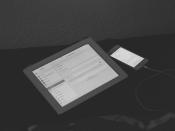Installation and configuration of both printers:1. Local:â¢Click on start then click on printers and faxes.
â¢Click on add a printer.
â¢The wizard will appear click on next.
â¢Choose local printer then click on next.
â¢Select a printer port and click on next if the printer is available click on next if not click on have diskâ¢Click on keep existing driver and click on next.
â¢Type a name for your printer and click on next.
â¢Click on don't share then click on next.
â¢Print test page if you want to check for errors.
â¢When the installation is complete click on finish.
2. Network:â¢Click on start then click on printers and faxes.
â¢Click on add a printer.
â¢The wizard will appear click on next.
â¢Choose network printer then click on next.
â¢Choose connect to this printer then click on nextâ¢Type: ( \\server\printer) so the list of printers available in the network appears, click on the one you want then click on next.
â¢Choose default or no then click on next.
â¢When the installation is complete click on finish.
Task 2What Is Backup and Recovery?A backup is a copy of data. This copy includes important parts of your database such as the control file and data files. A backup is a safeguard against unexpected data loss and application errors; should you lose your original data, you can use the backup to make it available again.
Backups are divided into physical backups and logical backups. Physical backups, which are the primary concern of this guide, are copies of physical database files. In contrast, logical backups contain data that you extract using the Oracle Export utility and store in a binary file. You can use logical backups to supplement physical backups. You can make physical backups using either the Oracle8i Recovery Manager utility or...


